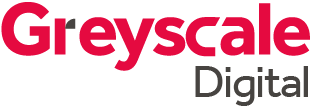
Best social media metrics to focus on
Any social media strategy worth its salt needs to be measured properly. Yet you might be surprised by how many marketers don’t think to look past the data found on the Facebook Overview tab. While no one would argue about the importance of keeping track of those stats (that’s why they’re right up front), there’s a great deal more valuable intelligence to be gleaned by doing a deeper dive.
Facebook – The Basics
- Engagement
Engagement measures the number of times people took an action on your post. Actions include clicks, shares, comments, or reactions.
This is a valuable metric to gauge how much your audience likes your content. Learning the kinds of posts that people engage with will help inform your content strategy. Better engagement also helps your post reach more of your followers’ newsfeeds.
- Reach
Reach indicates the number of people who have seen your post. Changes to Facebook’s algorithm have made it more difficult to have brands’ messages be seen organically. So, even if a business has a large number of followers on Facebook, it doesn’t mean its posts will be visible to many of them.
You can access topline reach information on the Overview tab of your Facebook Insights page and get more detail in the Reach tab. This is a useful metric to help show the number of individual people who saw your campaign or content.
- Impressions
Whereas reach is the number of people who saw your post, impressions is the number of times your post was seen. If an individual saw a single post on three different occasions, that individual represents an increase of one in the reach figure and an increase of three in the impressions figure.
To see impressions data, go to the Posts tab and choose ‘Impressions: Organic / Paid’ in the drop-down menu. This metric allows you to understand how many times your ad was shown. If you divide your impressions by your reach you will get your frequency metric, which is the average number of times a person saw your ad. This can be helpful when trying to determine ad recall or brand uplift.
- Page Likes and Followers
Facebook likes and followers are important audience measurements. Likes are people who have identified themselves as a fan of your page, whereas followers have indicated a desire to see posts from your pages on their newsfeed (although the algorithm does not guarantee that they will).
It’s important to keep track of your audience size to make sure you are not losing more fans than you are gaining.
Twitter – The Basics
- Tweet Impressions
This metric is the number of times the tweet was shown, either on your followers’ timelines, as the result of a like, or in a search. The impressions information can be found by selecting ‘View tweet activity’ in your Twitter analytics. This metric can help show how your content or campaign has been pushed out to audiences outside of your own follower list.
- Engagements
On Twitter, engagement is any action a user has taken on your tweet, including clicking on a link, retweet, reply, and like. This measure indicates whether or not your tweet motivated someone to find out more or to share it with others. You will find engagement data under the Tweet tab. Having more engagements is a good sign that people like or want to interact with your content
- Top Tweet
On the account homepage in Twitter analytics, you’ll find the top tweet for the current month. That’s the tweet that has earned the most impressions. It’s an important indicator of what works well with your audience, be it the type of content, the hashtag used, the day and time of the tweet, or a combination of some or all of those factors.
- New Followers
‘New followers’ is the tally of new people who have chosen to follow your Twitter account during the past month. Choosing to become a follower shows a greater connection to your brand than retweets or likes do. This is a useful key performance indicator (KPI) for your brand’s overall performance in growing your audience.
- Top Follower
The top follower is the follower with the highest number of followers of his or her own who has been following you during the last month. Your top followers are the ones who have the greatest potential to spread your tweets to others by liking or retweeting them.
- Top mention
This is the tweet in which you were tagged with the most impressions. The users behind your top tweets are often good candidates for possible influencer campaigns as they evidently have a significant number of followers and are engaged with your brand.
Instagram – The Basics
- Impressions
This is the number of times your post was shown to your audience. Instagram analytics breaks down this data further by showing the impressions that came from hashtags, from home, or from profile. Good hashtag use will help improve your post impressions.
- Reach
The number of individual users who saw your post.
- Interactions
This is the total number of user actions taken directly on your post.
- Discovery
Instagram’s Discovery feature allows users to find new, relevant content from accounts they may not be currently following. Instagram’s insights will show the number of users reached through the feature who are not currently following you.
Next Level Metrics
With extra digging and calculation, you can gain some more valuable social media data and formulate KPIs to help quantify how well your strategy is performing from an awareness, engagement, and customer satisfaction point of view.
- Audience Growth Rate
It stands to reason that as internet access continues to grow worldwide, brands can expect to see a proportional rate of growth in their social media audience. So, quantifying the speed at which your brand is gaining followers is important, as is comparing your growth rate to that of your competitors.
This represents a shift in thinking from asking “How much is our audience growing?”, to asking “How fast is our audience growing?” If you see a flattening of your social media audience growth rate, it may indicate that you need to take action to counteract the trend.
To calculate your audience growth rate, add up your net follower growth on all platforms for the previous month, and divide that by your total audience on all platforms and multiply that by 100 (to get it as a percentage).
For comparative purposes, you could think of doing the same calculation on your competition’s social media platforms.
- Share of Voice
Share of voice compares social media mentions of your brand in relation to all of your competitors. It’s a useful way to see how visible, how relevant, and how ‘top of mind’ your brand is within the marketplace.
Begin by measuring all direct and indirect mentions of your brand during the month, using your handle or your name, across all social media platforms. (Social media monitoring and analytics tools can simplify this process.) Do the same for your competitors. Divide your total mentions by the total mentions for all brands (including your own) and multiply it by 100 to arrive at your share of voice percentage.
- Applause Rate
When members of your audience show a favorable response to your post, such as liking it or sharing it, they are confirming that they find value in it. Calculating the ‘applause rate’ will show the percentage of your audience who see your content as being valuable.
Calculate the total number of favorable responses that a post received over the course of the month and divide it by the total number of followers. Multiply that figure by 100 to get your applause rate as a percentage.
- Amplification Rate
The amplification rate represents the rate at which your audience shares your content with their networks. It’s a KPI that reveals your audience’s willingness to be associated and engaged with your brand.
Add up the total number of times a post was shared by users during the month. Divide that by your total number of followers and multiply it by 100 to get your post’s amplification rate.
- Virality Rate
There’s far more to measuring the quality of a post than the number of likes it has received or even the number of times it was shared. One post’s ability to go ‘viral’ is better reflected by calculating the percentage of how much it was shared out of the total number of times it was displayed. The calculation is simple: the total number of shares is divided by total impressions and multiplied by 100. This is the virality rate.
Let’s say that one post got 400 likes but it was shared by 2,000 of the 20,000 people who saw it. This shows more potential than another post that received 1,000 likes but was only shared by 2,000 of the 200,000 people who saw it.
In Conclusion
There are hundreds of social media metrics that can be examined, each of them bringing you more insight about your audience, their relationship with your brand, and how and when they want to receive information from you. Metrics can help you identify some of your most powerful brand champions and provide you with new and different ways to engage with them. Analytics metrics offer more than just KPIs on your social media strategy. They are the tools digital marketers need to build meaningful relationships with customers.
https://digitalmarketinginstitute.com/blog/the-best-social-media-metrics-to-focus-on-now


